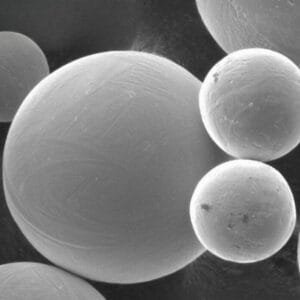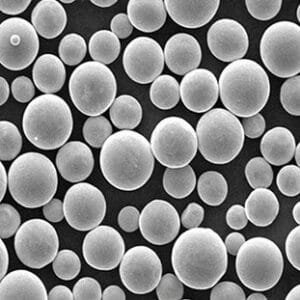IN100 Alloy Powder Overview
IN100 Alloy (UNS N13100) is a nickel-based, precipitation-hardenable alloy known for its excellent high-temperature performance and vacuum-cast qualities. With a remarkable rupture strength maintained up to 1900°F, it stands out due to its balanced composition, including aluminum and titanium, which provide excellent strength-to-weight ratio. Additionally, its low refractory metal content further enhances its desirability. IN100 Alloy has been successfully used across a variety of applications, particularly in the aerospace sector, with its use in components such as turbine blades, vanes, nozzles, and integral wheels.
With over 20 years of experience, TFM is a leading manufacturer and supplier of high-quality IN100 Alloy (UNS N13100) Powder, catering to industries with demanding performance requirements.
IN100 Alloy Powder Specifications
| Product Name | IN100 Alloy (UNS N13100) Powder |
| Alloy Grade | K417(K17、M17) |
| Related Grades | IN100 |
| Composition | C 0.13-0.22 Cr 8.5-9.5 Co 14-16 Mo 2.5-3.5 Al 4.8-5.7 Ti 4.5-5.0 Fe 1.0 max V 0.6-0.9B 0.012-0.022 Zr 0.05-0.09 Mn 0.5 max Si 0.5 max S 0.01 max P 0.015 max Ni Bal1 |
| Size Grades | -105+45micron -53+15micron |
| ASTM | / |
| AMS Specification | 5397 |
Applications of IN100 Alloy Powder
Heat Treatment
Components produced using IN100 Alloy Powder typically undergo heat treatment to enhance corrosion resistance and improve mechanical properties. This involves a diffusion cycle at temperatures between 1800°F and 2100°F, lasting for 2 to 8 hours, leading to partial solutioning. When diffusion is carried out between 1900°F and 1950°F, it is recommended to pre-solution the material at 2100°F to 2150°F. Following the diffusion process, an aging treatment at 1500°F to 1600°F further stabilizes the material, ensuring consistent high-performance characteristics.
Machinability
While IN100 Alloy Powder is more challenging to machine compared to carbon or stainless steels, optimal machining results can be achieved with the correct use of speeds, feeds, tools, and techniques. With proper machining protocols, satisfactory performance and precision can be ensured for critical components.





Reviews
There are no reviews yet.